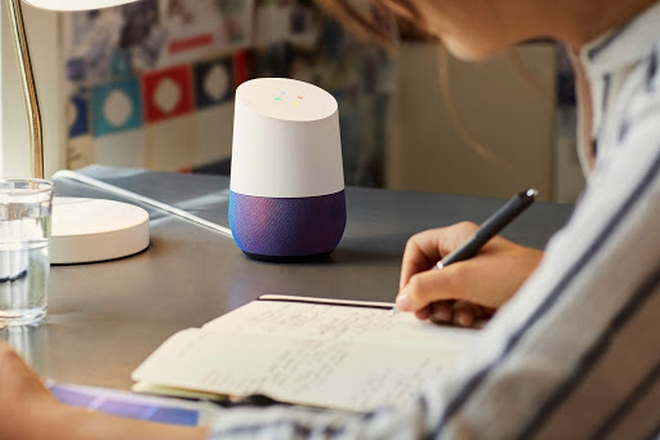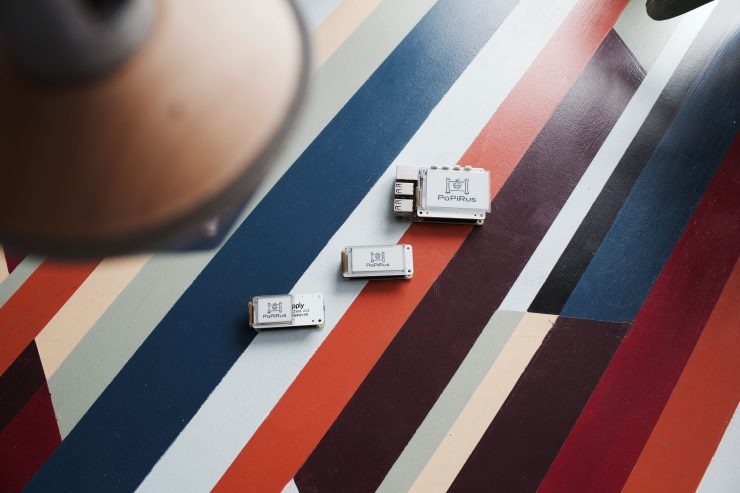7am. The blinds open slowly, allowing the first rays of light to enter the bedroom. The radio-alarm clock goes oof while coffee starts top drip in the kitchen. A warm towel is waiting for you right off the shower, as the heat was turned on a little before your waking time. Toasts jump from the toaster; good thing the fridge noticed the butter was running low and ordered some more. The garage door opens: it’s going to be a good day.
Is this just fantasy or… is this real life? More and more so. Companies are trying to offer technical solutions to fulfill consumer needs with respect to comfort, communication, and security through home automation. These processes have been around for a while now, and have lost a lot of their wow-factor. However, the market is now blossoming: Europe will have over 45 million connected houses in 2020, according to Berg Insight. That is four times what there was in 2015.
However, home automation is not news. Electronic blinds, security systems, automated gates… Now is the era of new-age automation. Home automation 2.0 not only includes automating existing processes but also inventing new functions, possibilities, reinventing our relationship to our house. On this “new” market, historic pure-players like Somfy or Legrand are losing ground to the giants of the digital age. For good reason too: connected objects are often seen as gadgets with obscure functioning — with long and anxiety-provoking set-up processes. In this respect, GAFAs are better equipped to penetrate the thought processes and daily lives of users who already know —and understand— them, and transform their approach to said objects.
Mistrust & security
The security issues that might arise with the use of such technologies are another obstacle to the full democratization of these tools. A number of whistleblowers have voiced their concerns, amongst which the CNIL and Ondřej Vlček, executive VP at Avast. He called the devices “absolute security nightmares”. Indeed, they can be literal entry points for hackers, robbers, and other malevolent spirits. Dan Crowler, the security researcher at Trustwave, sings the same tune. He believes that the information that travels when one controls one’s house from a distant location (one of the basic and prime uses of home automation) does so through servers and connection that might not always be very secure — at least not as much as they should be. Therefore, connected objects may very well constitute opportunities for malevolent or even criminal acts.
Furthermore, these objects are a massive data bank on private habits of consumers. The CNIL warns French citizens about voice assistants in a document issued on its website on December 5th, 2017. It underlines the fact that these little robots record all the data, and since these are virtually in perpetual standby mode, might as well record private conversations, etc. More broadly, welcoming these objects in our home and our routines could amount to a certain monetization of intimacy. Although that is a valid concern, one can only wonder if it is not already the case with other daily used objects — but it may be the first time, with home automation, that the proportions are this big and the penetration of electronics is this global.

Extensive systems, neutral platforms
The next challenge will regard links inside the automated home. The company that will “take all” will be the one that manages to connect all these objects to each other and create actual comprehensive systems. With respects to security, Norton released “Norton core”, a Wi-Fi router that guarantees the security of all connected objects inside a home. But the fluid automated home experience, in which the whole house can comprehend and anticipate the consumer’s needs is still a little far from us. That is partly due to the fact that for now, the automation processes and tools come from several different systems. But those differences are bound to disappear, according to a study by Xerfi. So are telecom operators: they won’t be able to integrate enough home automation partners to their ecosystems nor centralize enough connected objects. The leaders of that market, the GAFAs, will suck up their offer. This transformation is already on the move: indeed, Bouygues Télécom co-developed a complete telecom offer via the Android TV exploitation system.
As connected objects invade our homes, it’s important to understand the business issues that underlie beneath the services they can provide. Indeed, the main danger linked to an increasingly automated home experience lies within the confusion and blurriness around competition rules. On the one hand, the more home automation processes are organized as systems, the more future purchases of consumers will be guided (just like iPhones, iMacs and iPods work in systems — thus discouraging users to enter a new system, as the change is too complex). On the other hand, net neutrality and especially good practices on commercial platforms are turning into an increasingly major issue in our homes. If your fridge becomes so smart that it can order butter when you are running low, which website will it choose to do so? Which brand will it choose? What will it base its decision on your own preferences, values, consumption habits, best prices, and reviews, or the sum whatever brand pays the fridge designer? The forms this question can take are as infinite as the number of “smart” objects you can think of (washing machine, coffee maker…).
Look Forward’s vision
Home automation raises more questions than just “what will we be capable of achieving inside our homes?” — we know that tech can still greatly evolve. More challenges arise for the leaders of the home industry regarding design, production, and partnerships to seek with tech companies. But more importantly, consumers and public authorities need to question their relationship to tech, data, intimacy, security, trade…
